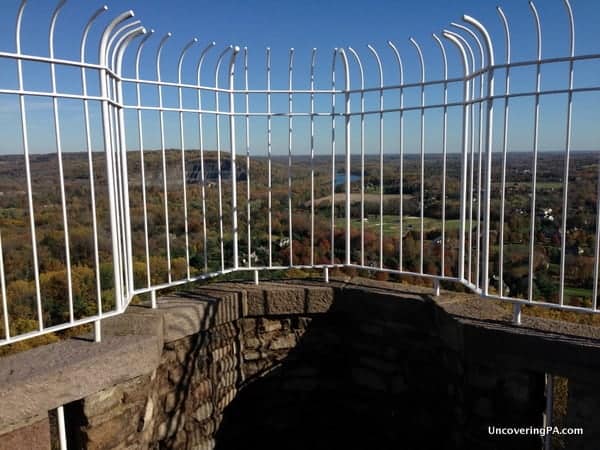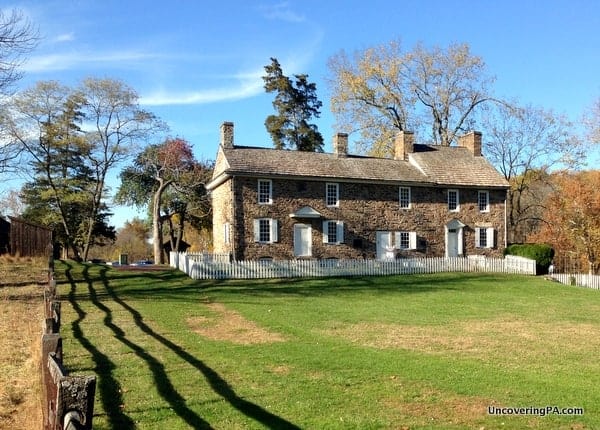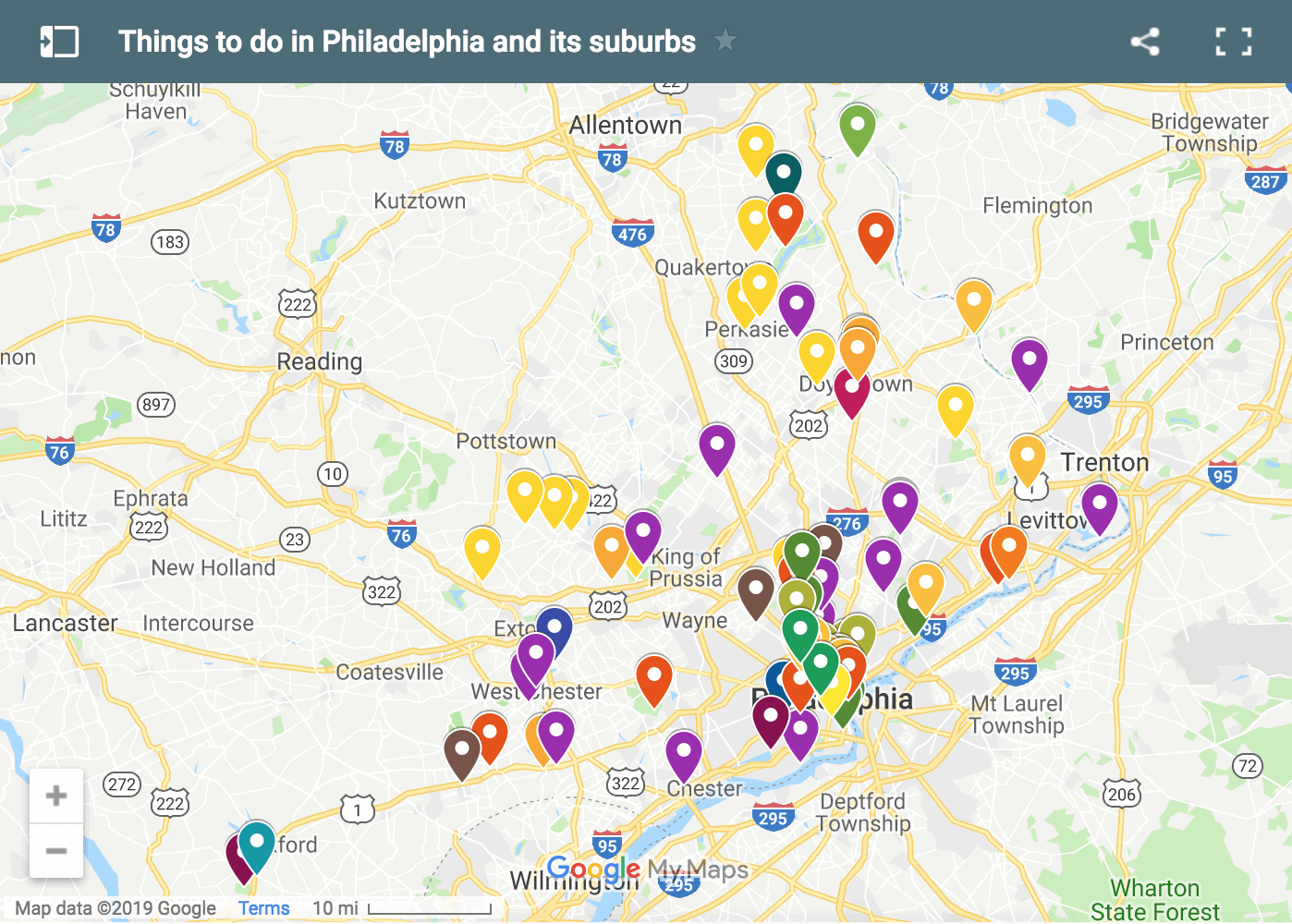On Christmas night, 1776, Continental Army General George Washington executed one of the most daring raids in military history. On that night, in a terrible winter storm, Washington and 2,400 of his troops crossed the Delaware River into New Jersey.
Early the next morning, they surprised the Hessian soldiers fighting for the British at Trenton, New Jersey. The Battle of Trenton was a rousing success for Washington and might have been even more successful had two other groups of soldiers been able to cross the Delaware.
Nevertheless, the Battle of Trenton, which occurred less than six months after the signing of the Declaration of Independence in nearby Philadelphia, was one of the first successes for Washington’s army and cemented his place as its commander.
Over the years, Washington’s Crossing became one of the most iconic moments of the Revolutionary War and was even commemorated in a very idealized painting by Emanuel Leutze in 1851. In the photo, Washington is seen standing on a boat going across the Delaware River. Despite being incredibly inaccurate from a historical standpoint, the photo has captured the imaginations of many, myself included.

Today, the area where Washington crossed the Delaware has been preserved on both the Pennsylvania and New Jersey sides of the river. On the Pennsylvania side of the river, the community that was once known as Taylorsville has been known as Washington Crossing, Pennsylvania, since 1917. At the heart of the community is Washington Crossing Historic Park.
In many ways, the park itself has little to do with Washington’s brief time in the area.
With the exception of the old foundations of the McKonkey’s Ferry Inn, none of the buildings that you see on the site were in place at the time Washington and his troops came to the area. And the exact spot where Washington crossed is unknown. However, that doesn’t mean that a visit to the park isn’t worthwhile.
When I visited, I started my time in the visitor center.
The first thing you’ll notice when you walk through the front doors, assuming the theater doors are open, is the full-size reproduction of Leutze’s painting of Washington’s Crossing. While the original hangs in New York’s Metropolitan Museum of Art, this copy still offers the chance to marvel at the painting in all of its erroneous splendor.

The visitor center is also home to a small museum about Washington’s historic crossing.
The museum does a great job covering what happened at the site, along with dispelling some widely held beliefs about the crossing. That being said, it is not vey large, and I wouldn’t consider it a significant loss should you not be able to visit to museum during your visit.
Before I left the visitor center, I made sure to stop by the information desk to pick up a brochure for the self-guided tour of the preserved town. This guide tells you some information about the remaining buildings, and even though only one of them was around when Washington was there, it’s still interesting to learn about the town of Taylorsville that formed in the early 19th century.
Stepping outside, I got my first view of the Delaware River. To be perfectly honest, I was a bit disappointed by it.
You see, I had always imagined the crossing being across a very wide body of water. Instead, the river here is less than 1,000 feet wide. I guess that’s just one more misconception I can thank Leutze’s painting for.

Once I had finished checking out the preserved town next to the visitor center, I decided to visit the two other off-site properties that are part of Washington Crossing Historic Park.
My first stop was Bowman’s Hill Tower. Many who visit this mountaintop observation deck mistakenly believe that it existed during the Revolutionary War. While that’s not true (it was built in 1929), Washington’s troops did light a signal fire on the then-bare hilltop to communicate with other American troops.

Bowman’s Hill Tower is only 125-feet tall, but its position on top of the tallest hill in the area affords a great view overlooking the Delaware River Valley.
In fact, on a clear day, you can see up to 14 miles, all the way to Trenton, New Jersey. If you want to get a lay of the land in this part of Pennsylvania, there is no better vantage point than the top of Bowman’s Hill Tower.

It is worth noting that visitors have a choice of two routes to reach the top of the tower.
The first is to walk up the tower’s 100+ winding stairs, though there is nothing eventful to see along the way. The other option is to take the old, horror film-esque elevator to 3/4 of the way up the tower. However, you still need to climb the last 23 steps, which are very narrow and steep.
Those who are claustrophobic or have any issue with large steps might want to avoid the tower.

Once I had my fill of the view from Bowman’s Hill Tower, I drove over to the Thompson-Neely House.
While I was unfortunately unable to visit the house, it has an interesting history as a field hospital both before and after Washington’s crossing. Interestingly enough, a young James Monroe recovered in this home after he was wounded in the Battle of Trenton.

A short hike from the home is the Soldier’s Graves.
This small line of graves is the last resting place for an unknown number of Washington’s men. The men who died here succumbed to exposure or illness while the army was camped nearby. Only one of the soldiers buried here is known by name, so most of the gravestones read “Unknown Soldier.”

Overall, Washington Crossing Historic Park is an interesting place to visit.
It is most popular for its annual Christmas Day recreation of Washington’s famous crossing.
Outside of Christmas Day, the park is definitely worth visiting if you are very interested in US history or you’re visiting Bucks County or the nearby town of New Hope. For the casual observer, the park is worth checking out for its myth-busting information and the great view from Bowman’s Hill Tower. However, it wouldn’t make my list of must-see sites in and around Philadelphia.
Note: My visit to Washington Crossing Historic Park was part of a compensated Instagram tour I did in partnership with Visit Philadelphia. However, the opinions expressed are my own.
Looking for more places to visit nearby? Check out Ringing Rocks Park, the Bucks County Children’s Museum, and the best breweries in Bucks County.





 "
"




Thank you for some great web pages. I wanted to check on some things about George Washington Crossing the Delaware River and your site’s information was perfect. I am ‘obsessed’ with the fact that a particular general did what he did and on that particular night. The get up and go (with a really good reason planted somewhere in his head, I assume) is not lost on me. Had Washington, his men and the others, not done what they did, we would all be speaking with an English accent most likely. Truly amazing.
Also, I lived in Bucks County, PA (Churchville) for many years while the kids went through school and in New Hope for a few years in the 1990’s.
Thanks Jim, nice job. I’m going to explore the rest of your site after the holidays are done.
Diane Brown
P. S. Been past Bowman’s Tower a thousand times, but never went inside! Live in NC now but maybe when up there to see the grand kids, I’ll fix that.